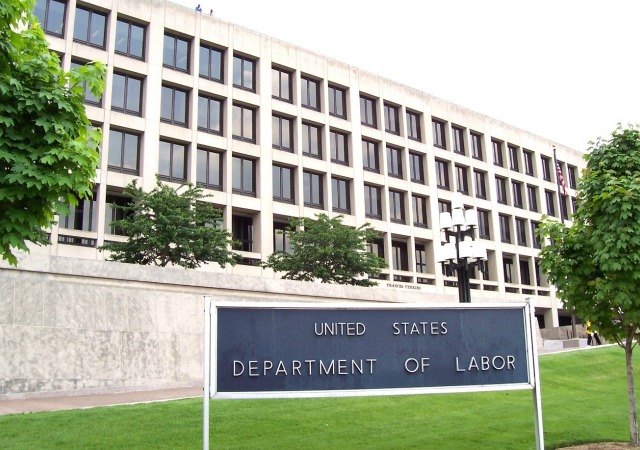Stellar Jobs Report Released Notwithstanding Nancy Pelosi’s Prediction of “Armageddon”

2018 has started off with a bang as the January jobs report showed the economy added 200,000 jobs during the month while the unemployment rate steadied at 4.1% for the fourth straight month. That’s the lowest it’s been since December 2000.
The Labor Department reported:
Total nonfarm payroll employment rose by 200,000 in January. Employment continued to trend up in construction, food services and drinking places, health care, and manufacturing.(See table B-1. For information about the annual benchmark process, see the note andtable A.)Construction added 36,000 jobs in January, with most of the increase occurring among specialty trade contractors (+26,000). Employment in residential building construction continued to trend up over the month (+5,000). Over the year, construction employment has increased by 226,000.Employment in food services and drinking places continued to trend up in January (+31,000). The industry has added 255,000 jobs over the past 12 months.Employment in health care continued to trend up in January (+21,000), with a gain of 13,000 in hospitals. In 2017, health care added an average of 24,000 jobs per month.In January, employment in manufacturing remained on an upward trend (+15,000). Durable goods industries added 18,000 jobs. Manufacturing has added 186,000 jobs over the past 12 months.Employment in other major industries, including mining, wholesale trade, retail trade, transportation and warehousing, information, financial activities, professional and business services, and government, changed little over the month.
The government shutdown from January 20 – 22 meant the Labor Department had to suspend its household surveys. Thankfully, though, the department said that “there were no discernible efforts.”
But as jobs have grown, Joseph Brusuelas, the chief economist at RSM US LLP, said that people have not talked about scarcity of labor:
“With little to no slack left in the economy, the major challenge for both policymakers and firm managers is where will businesses find the workers to meet growing demand in a new economy increasingly organized around science, mathematics and technology in a tightening labor market.”Given that there is roughly one worker per job opening in the economy, the narrative inside the labor market is rapidly shifting from that of triumph to that of concern amongst firms of all sizes over how to fill positions among labor scarcity. Due to misaligned immigration policies during a time of economic acceleration and the lack of those that are willing and able to work, firms are about to enter a period of rapid integration of technology as a substitute for labor to avoid growing bottlenecks in production and the provision of services. In a rational world, this would be a major inflection point stimulating profound public debate, Congressional hearings and a Presidential commission to map out possible policy paths in an age of Artificial Intelligence. Instead all we get is an already tired juvenile discussion around who gets political credit for the secular improvement in job creation and the economy.”
Despite this, experts believe the economy will keep growing in 2018 due to “solid consumer and business confidence, stronger conditions overseas and tax cuts at home.”
Jason Patrick owns the Express Employment Professionals office in Nashville, TN, and he told WSJ that “the tightening labor market means more workers are jumping to new jobs compared with recent years.” Employees have chosen to leave and find better opportunities when their “employers are not adjusting their current pay scale to reflect the realities of the market.”
This has raised competition, which has led companies to make changes to keep these employees. Yes, they raise wages, but Patrick said “they are having to provide more training, more development for their people, better engagement with their employees.”
The report also showed that wages went up 0.34% in January, which puts it up 2.9% over the year. From The Wall Street Journal:
Average hourly earnings rose 2.9% in January from a year earlier, the strongest gain since 2009 and above the 2.6% gain economists had forecast. Compared to the prior month, wages rose 0.3% in January.The data signals that a tight U.S. labor market is finally beginning to filter through into higher pay for workers. Many investors believe wage growth will propel broader measures of inflation growth by allowing companies to raise prices.Still the latest gain is still slightly below prerecession rates. The year before the recession began in late 2007, wage rose a better than 3%.One caveat: the average workweek deceased last month, so weekly paychecks are growing at slower rate than hourly wages. For the month, hourly wages grew 9 cents, or 0.34%, in January from a month earlier.
CLICK HERE FOR FULL VERSION OF THIS STORY